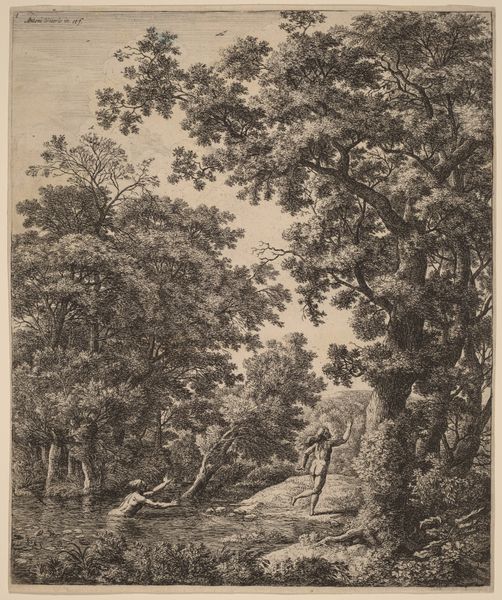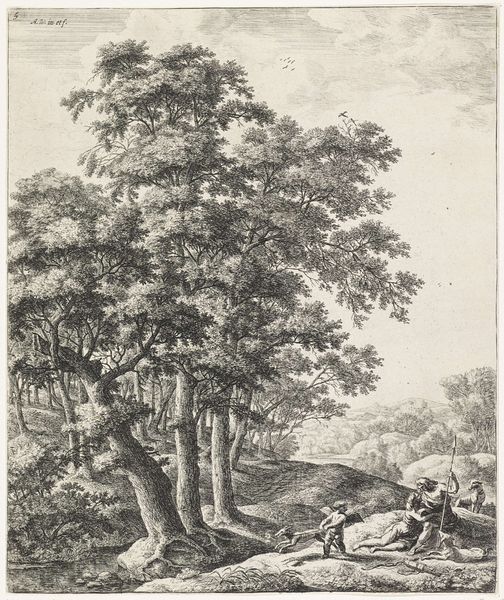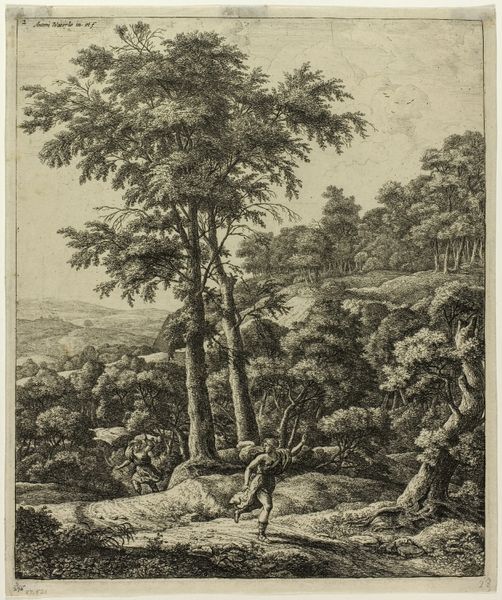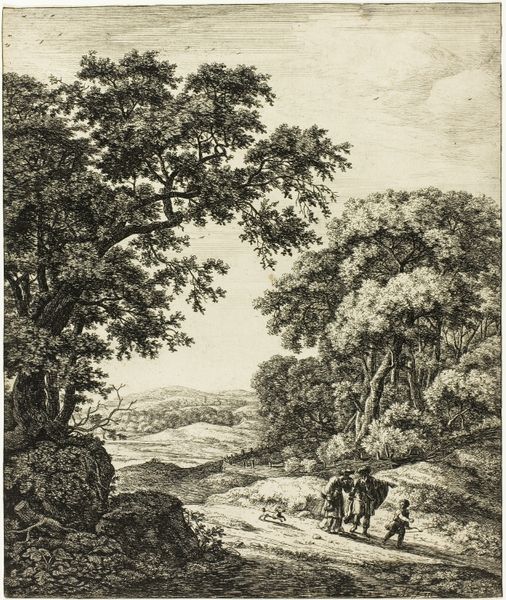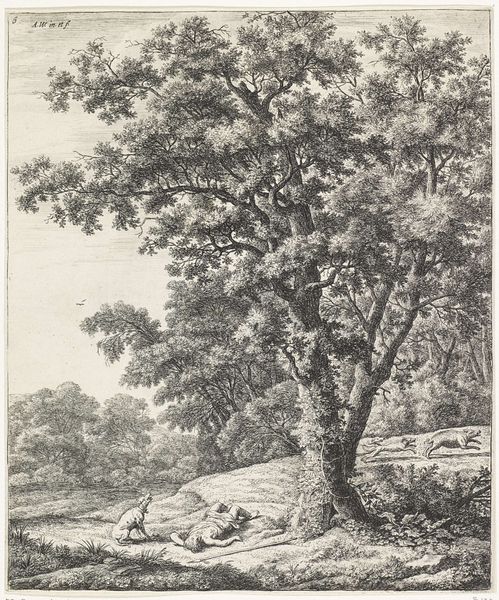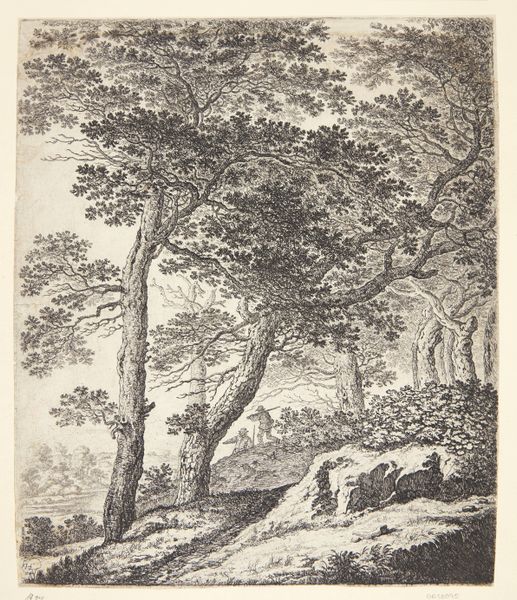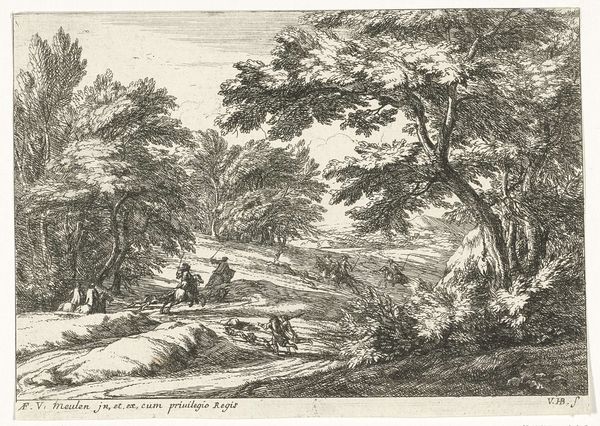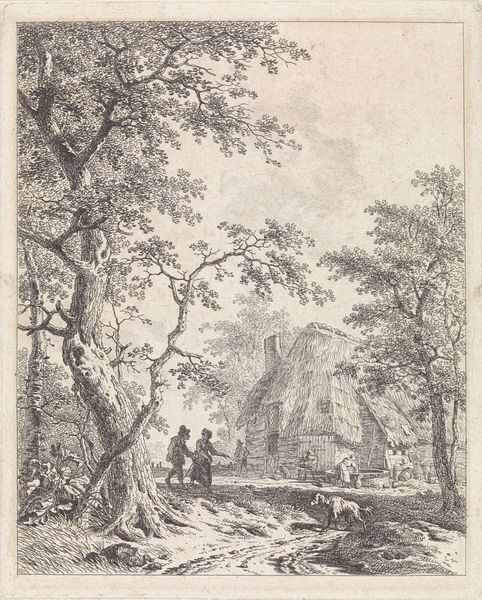
drawing, etching
#
drawing
#
animal
#
dutch-golden-age
#
etching
#
dog
#
landscape
Dimensions: height 290 mm, width 236 mm
Copyright: Rijks Museum: Open Domain
Editor: Here we have "Two Figures and a Dog by a Brook" by Anthonie Waterloo, rendered with etching sometime between 1630 and 1676. I'm struck by the density of the foliage and how it almost overwhelms the human figures. What do you make of this scene? Curator: It’s a quintessential example of Dutch Golden Age landscape. Notice how the figures are diminutive, placed low in the composition. This was a deliberate choice, wasn’t it? Landscape painting, and printmaking like this, rose in popularity as Dutch civic identity solidified, and art served a crucial role in establishing that national identity and civic values. Editor: So, the emphasis on the landscape is more than just aesthetic? Curator: Exactly. Think about the burgeoning merchant class during that period. Landscapes depicted not only the beauty of the Dutch countryside but also subtly conveyed a sense of ownership, control, and national pride. This imagery reinforced a collective identity linked to the land itself. And what’s striking is how easily available it was – prints allowed for wider distribution of these national narratives. Editor: That makes sense. It's like they're saying, "This is our land, our home." Curator: Precisely. Now consider the dog drinking from the brook. Does that strike you as particularly... natural? Editor: I suppose it does seem quite staged, almost symbolic now that you mention it. Like part of the scene for emphasis. Curator: Right! Think about other common national symbols – like lions. The dog feels akin to those, a subtle reminder of "domestication," where nature is made familiar. These are representations molded to convey specific ideologies. I would venture the detail in landscape itself normalises or implies how important having land as stability was. Editor: So it becomes about more than just what's on the surface? Curator: Always! The landscape isn't just background; it’s foregrounding Dutch values, beliefs, and even political aspirations of the time. I appreciate how the use of printing here made this so accesible. Editor: I'll definitely think differently about landscapes now! Thanks!
Comments
No comments
Be the first to comment and join the conversation on the ultimate creative platform.

